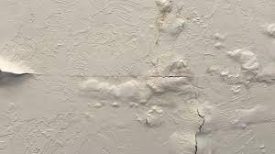A ceiling bubble, also known as a water spot, is a common problem that homeowners may encounter in their homes. This issue can be caused by a variety of factors, including a leak in the roof or plumbing system, poor ventilation, or condensation buildup. If left untreated, a ceiling bubble can lead to more serious damage and even pose a safety hazard.
The first step in addressing a ceiling bubble is to identify the cause of the problem. If the bubble is cause by a leak in the roof or plumbing system, it is important to address the issue immediately to prevent further damage. This may involve calling a professional to repair the leak or replacing damaged pipes or roofing materials.
If the ceiling bubble cause by poor ventilation or condensation buildup. There are a few steps that homeowners can take to alleviate the problem. One option is to install a ventilation system, such as a fan or dehumidifier, to help circulate air and reduce moisture buildup. Homeowners may also want to consider installing insulation to prevent hot and cold air from mixing and causing condensation.
Once the cause of the ceiling bubble has been addressed, the next step is to repair the damage. This typically involves removing the damaged section of drywall and replacing it with new material. Homeowners may want to consider hiring a professional to perform the repair, as they will have the expertise and tools necessary to complete the job safely and efficiently.
Before repairing the ceiling bubble, it is important to first assess the extent of the damage. In some cases, the bubble may be small and easy to repair. However, if the bubble has caused significant damage to the drywall or other materials. It may be necessary to remove a larger section of the ceiling to fully address the issue.
Once the damaged section of the ceiling has been remov, it is important to thoroughly dry the area before installing new drywall. This may involve using fans or dehumidifiers to help circulate air and reduce moisture. Homeowners may also want to use a mold and mildew remover to ensure that there is no mold or other bacteria present in the area.
After the area has been fully dry and cleaned, it is time to install the new drywall. Homeowners should make sure to use high-quality drywall and follow proper installation procedures to ensure a long-lasting repair. Once the drywall has been install. It may be necessary to apply a coat of paint or other finishing material to match the surrounding ceiling.
In some cases, homeowners may choose to hire a professional contractor to perform the repair. This may be especially beneficial for larger or more complex ceiling bubbles. As professionals will have the tools and expertise necessary to complete the job safely and efficiently. Additionally, hiring a professional may help to ensure that the repair done correctly and that there are no underlying issues that could lead to further damage down the road.
In conclusion, a ceiling bubble is a common issue that homeowners may encounter in their homes. Whether caused by a leak or moisture buildup. It is important to address the issue quickly to prevent further damage and ensure the safety of those living in the home. By identifying the cause of the problem and following proper repair procedures. Homeowners can successfully repair a ceiling bubble and restore their home to its original condition.

